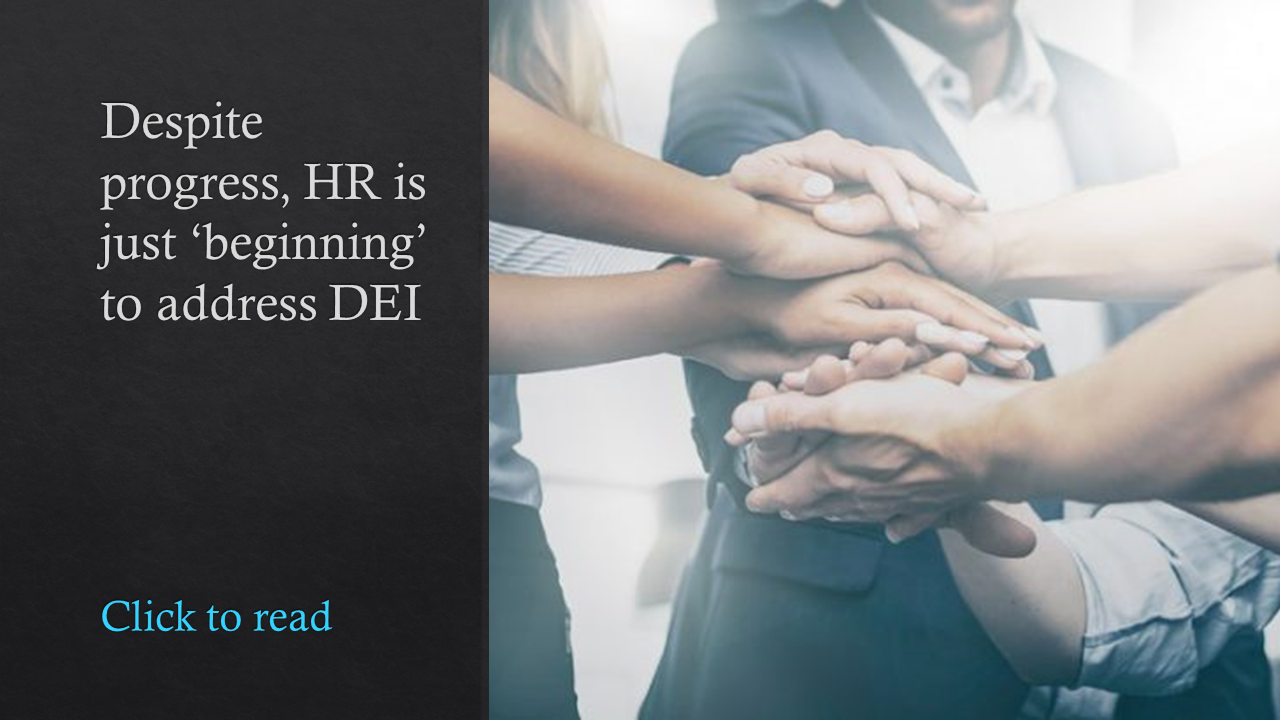The value of measuring diversity statistics is nearly universally understood by employers. According to an employer survey by RedThread Research, 92% of respondents measure diversity–but, only three-quarters take the same approach for inclusion.
Stacia Garr, one of HRE’s Top 100 HR Tech Influencers and a presenter at this fall’s HR Tech Conference, recently shared the growing need for robust inclusion analytics strategies during New York University’s Accelerating Equity and Inclusion Through Data and Technology conference.
Garr, co-founder and principal analyst at RedThread Research, says there are a few key differences between diversity and inclusion analytics. The former originated in the collection and reporting of standardized demographic groups by the EEOC and is largely focused on representation metrics. Inclusion analytics, however, involves metrics that reflect employee perception and sentiment about equity, inclusion and belonging, as well as objective measures related to those areas.

Garr identified three primary reasons that employers should consider adding inclusion analytics to their DE&I strategies:
- People: Inclusion analytics allows employers to “understand people and their perspectives at a much more nuanced level” than traditional diversity analytics, Garr says. Through IA, organizations can get a feel for whether employees are connected to one another, can measure the strength of bonds within teams and can identify areas of the organization where employees are struggling to feel valued or find meaning in their work.
- Processes: The approach can also help companies identify unfair and potentially biased systems and practices. Inclusion analytics, Garr says, can highlight if certain groups of employees have better access to development opportunities and promotions and if performance management scores and feedback are unfairly skewed by demographics.
- Predictions: Inclusion analytics can be a leading indicator for organizations looking to build better representation data–to ensure their workforce adequately represents the broader population. When employers have a better understanding of inclusion–such as what’s driving promotions, employees’ intent to stay or their behavior–they’re better equipped to make predictions for the future in order to achieve the representation numbers for which they’re striving.
Related: 3 ways workplace tech can advance your DE&I
So, if you’re not measuring IA yet, where do you start?
Garr says there are two primary approaches to inclusion analytics. The natural first step is looking at perceived inclusion, which involves capturing employee perceptions at a personal level about what inclusion within the organization looks like to individual employees. This can be built out to include objective inclusion–a much less common approach but one that Garr says holds significant opportunity for HR. Objective IA can include analyzing succession lists, response time and tone of emails, wellbeing data to identify burnout, performance scores, invitation rates for meetings, hi-po lists and more–all with attention to disparate impacts on certain demographic groups.
See also: Abbby Wambach to kick off HR Tech Conference this year
Beyond these strategies, Garr suggests embedding inclusion analytics throughout the entire company to begin shifting the organization’s mindset.
Consider inclusion in everything, she says, including by building inclusion measurements into all people practices. Share inclusion data broadly–RedThread Research found that inclusion data is being shared with about 65% of senior leaders but less than one-third of employees. “If you’re looking to drive change, you can’t do it all if [the information is being] held at the top,” she says.
And, use technology to create scale. Consider building inclusion analytics into every dashboard you create and provide tools for employees to share feedback broadly.
“Inclusion analytics,” she says, “is critical for diversity, equity, inclusion and belonging. You have to look beyond just perception data and build inclusion analytics throughout the organization.”
Related: Register here to learn more from Garr during her HR Tech mega session, “Skills and DEIB: How the Biggest Topics in HR Will Transform Your Organization.”



